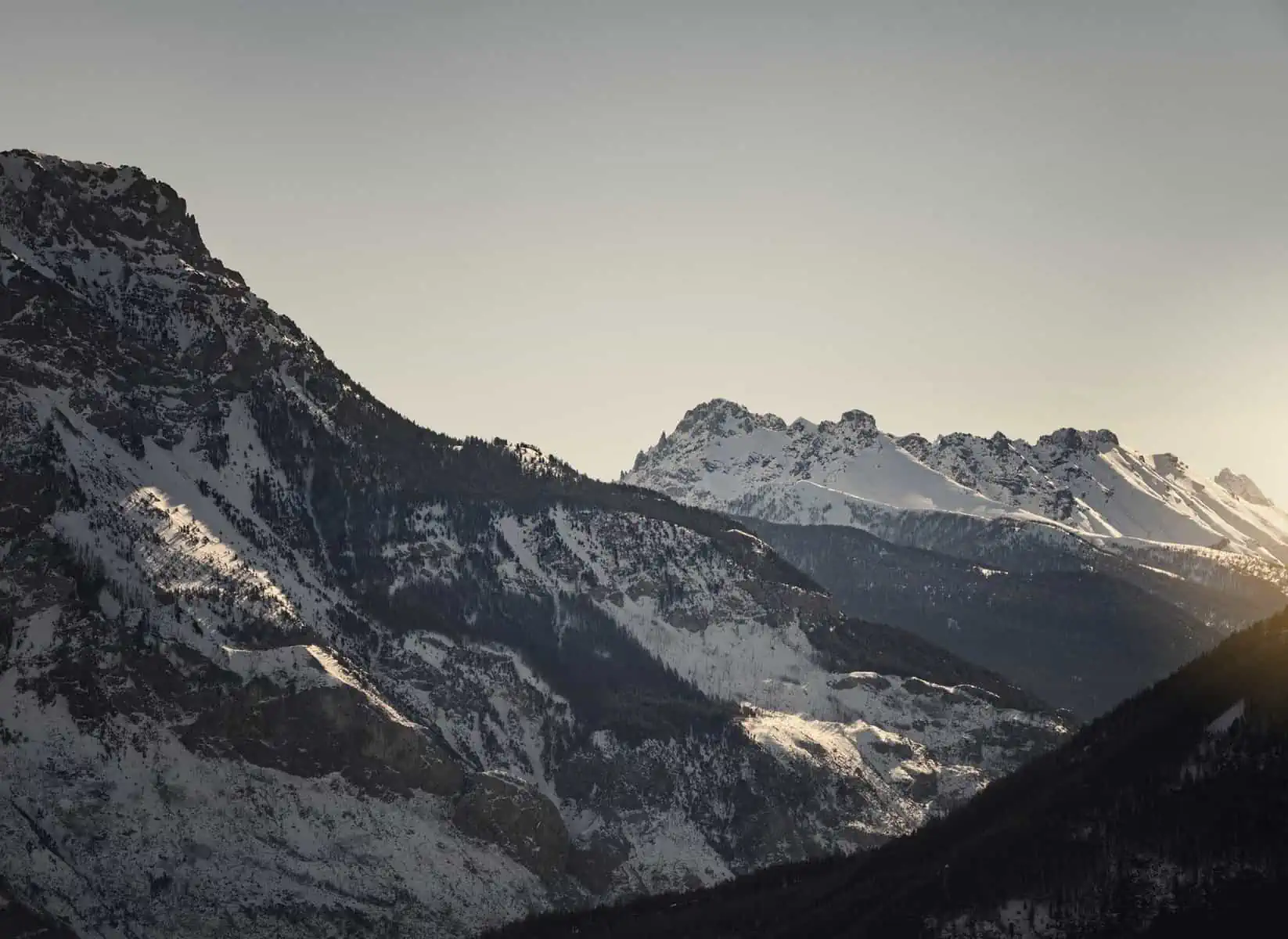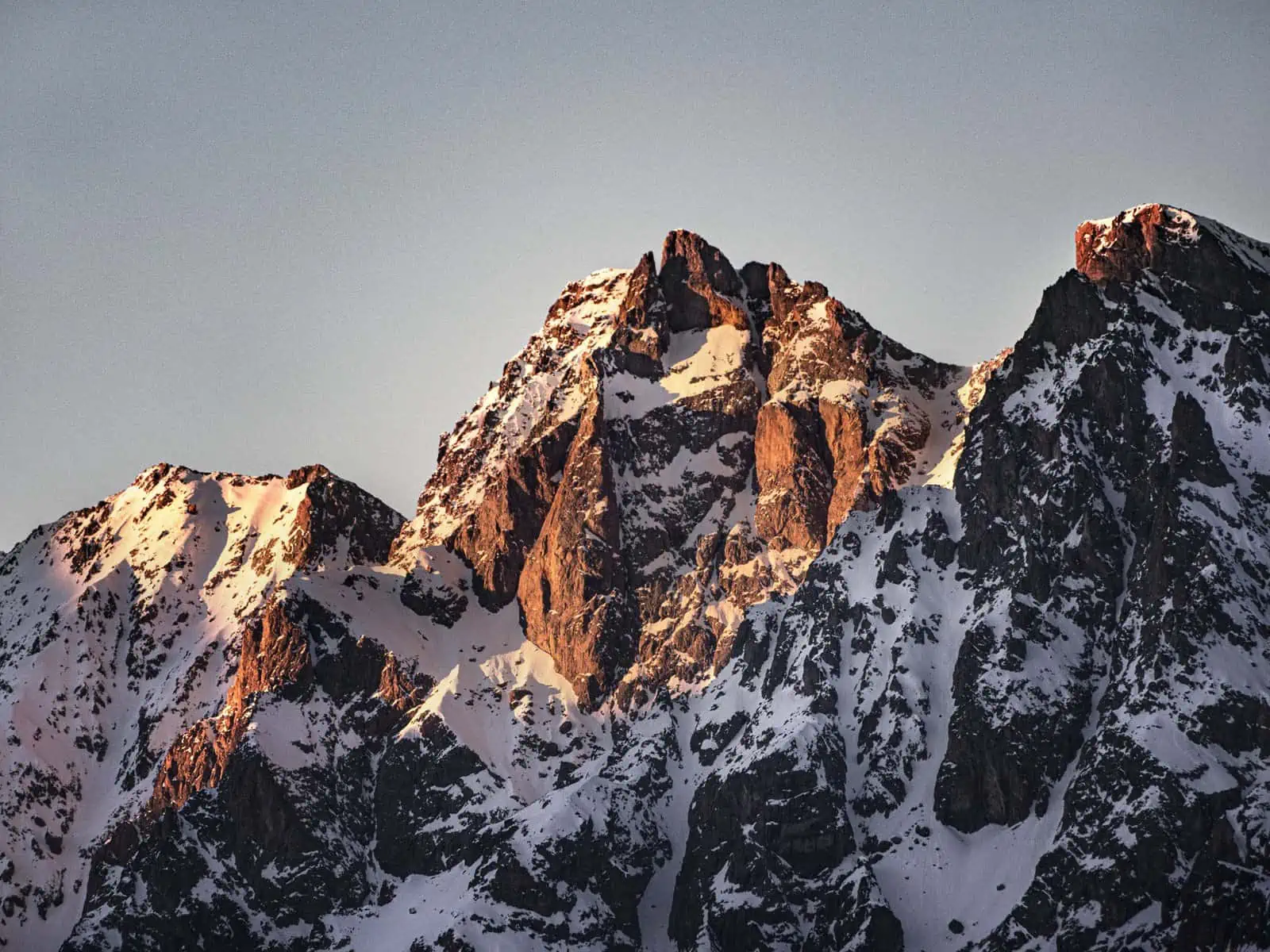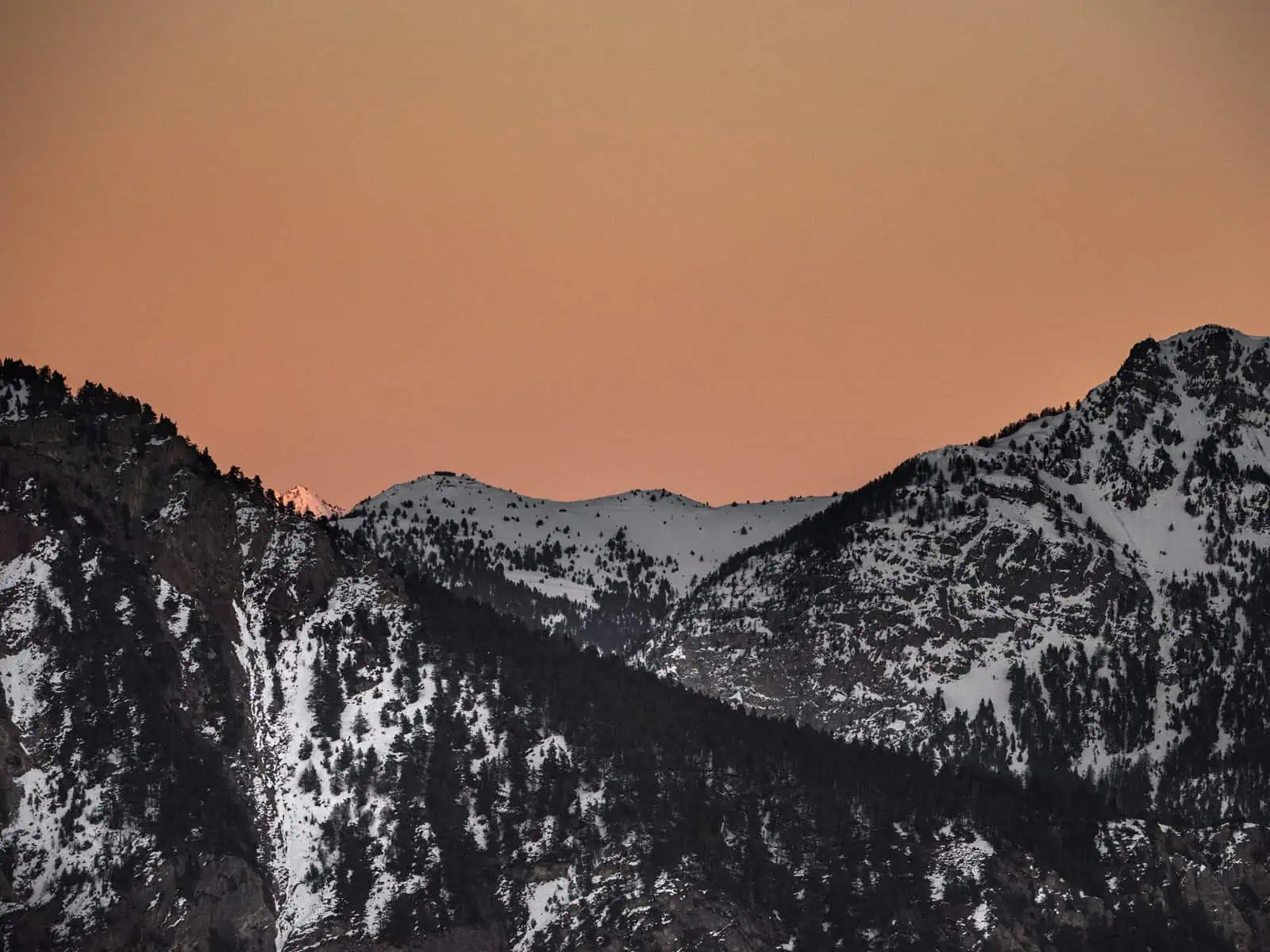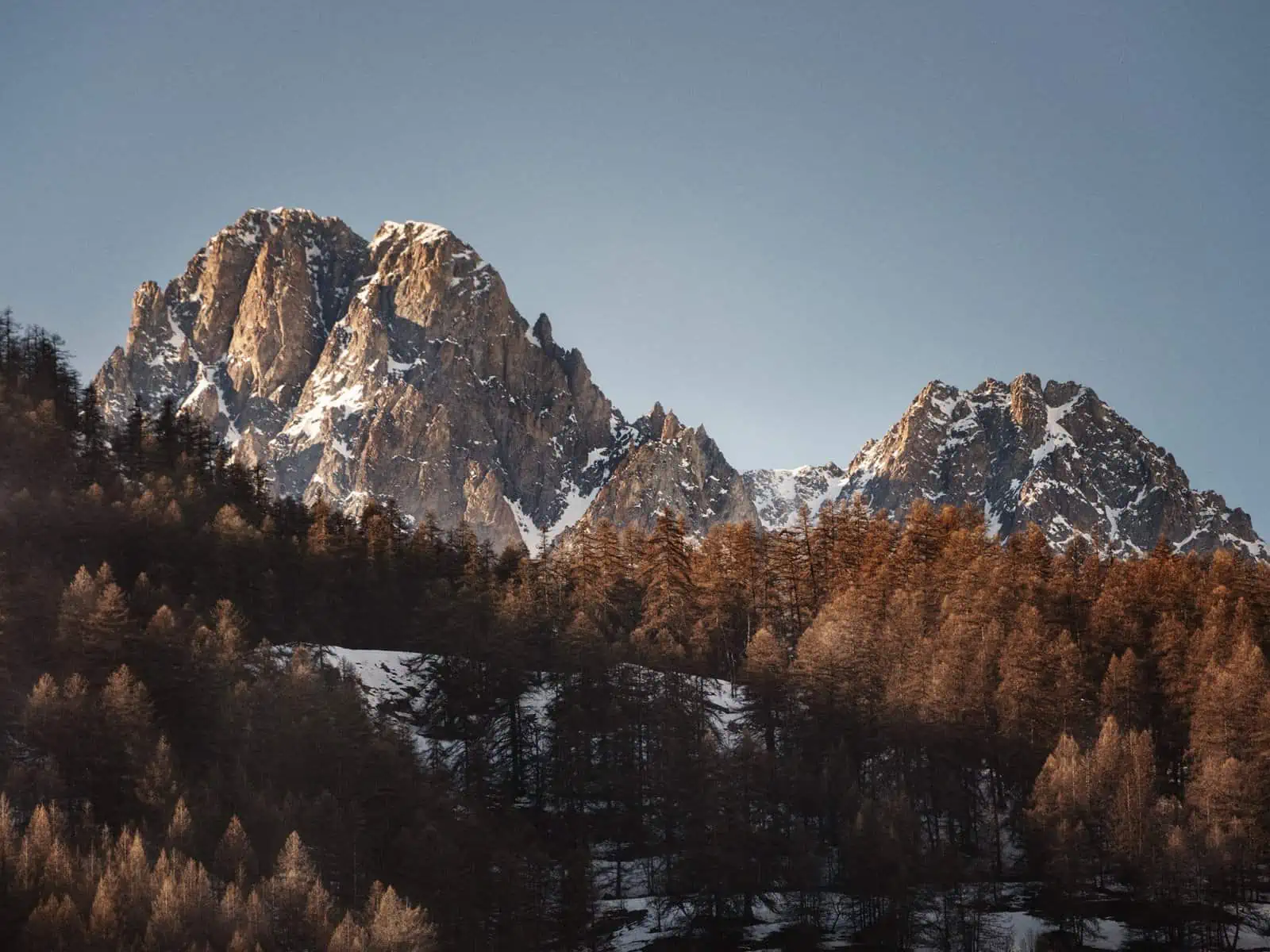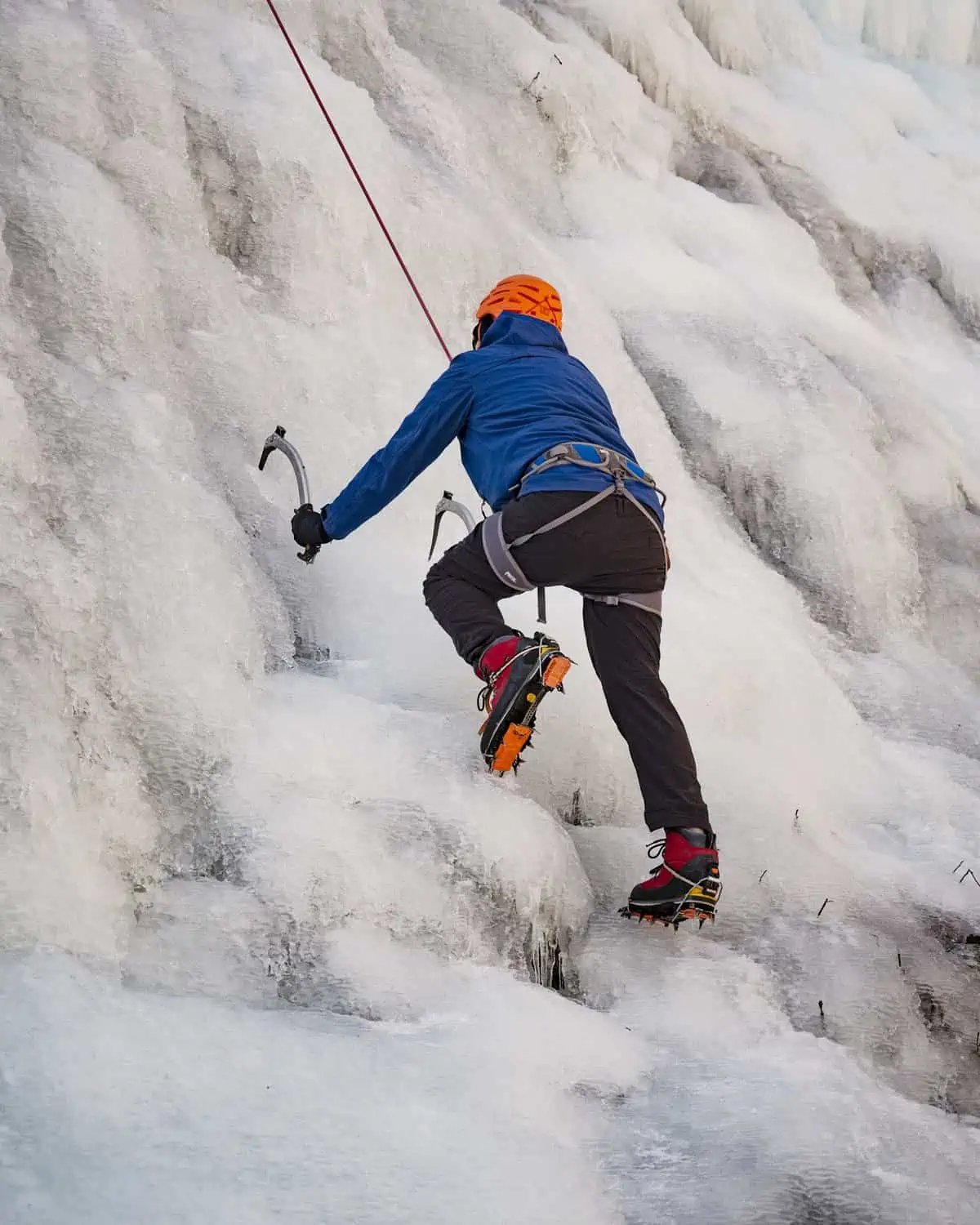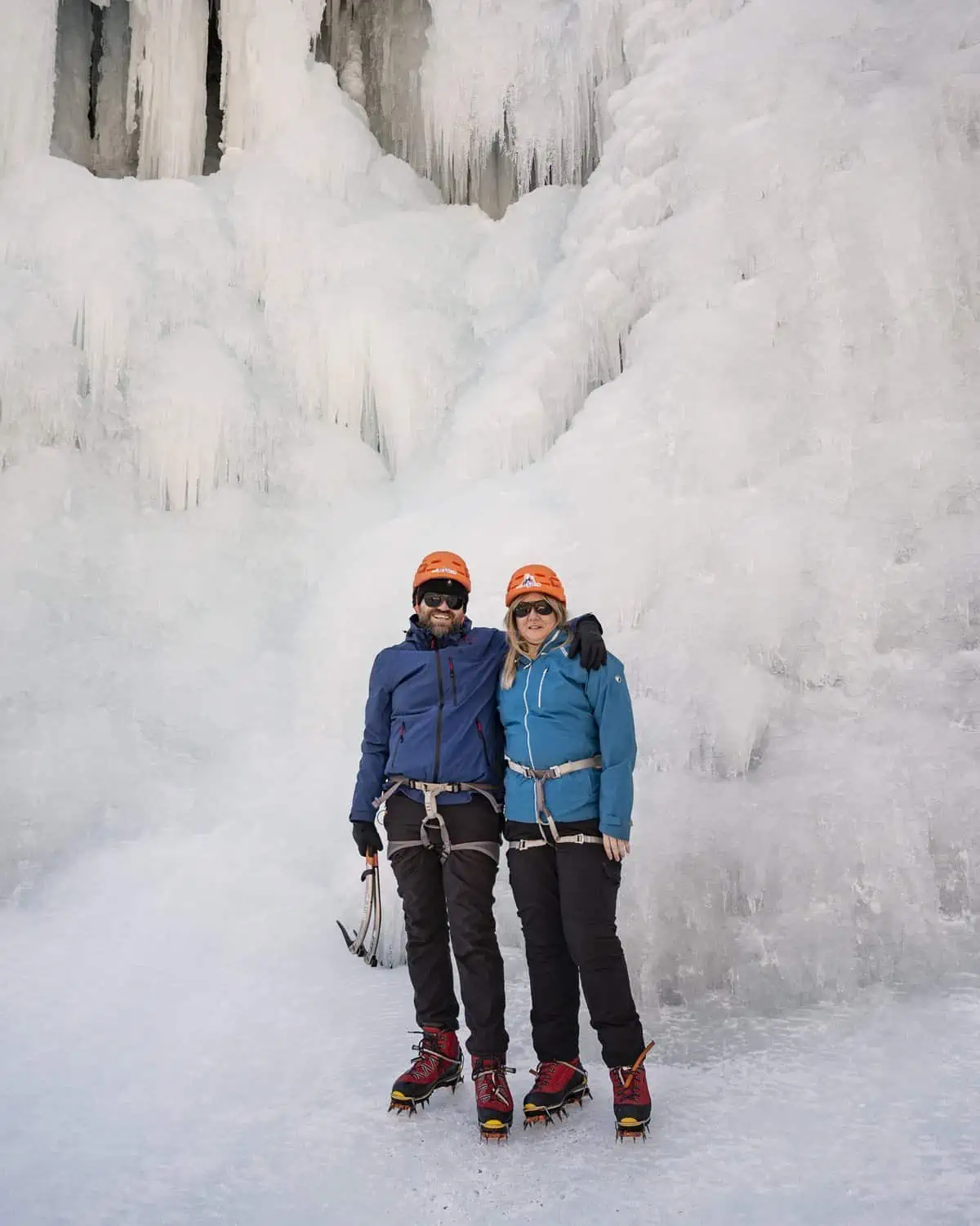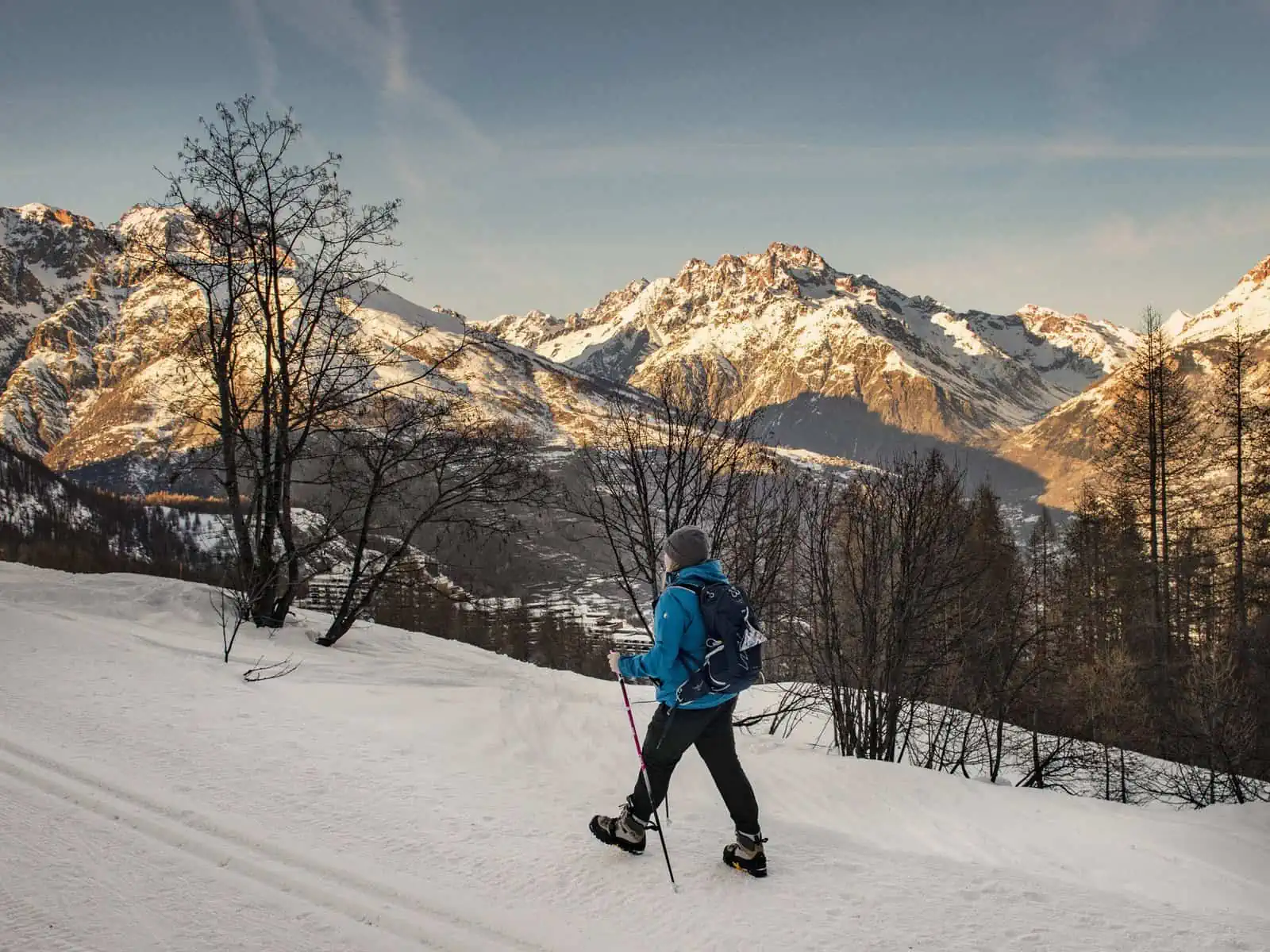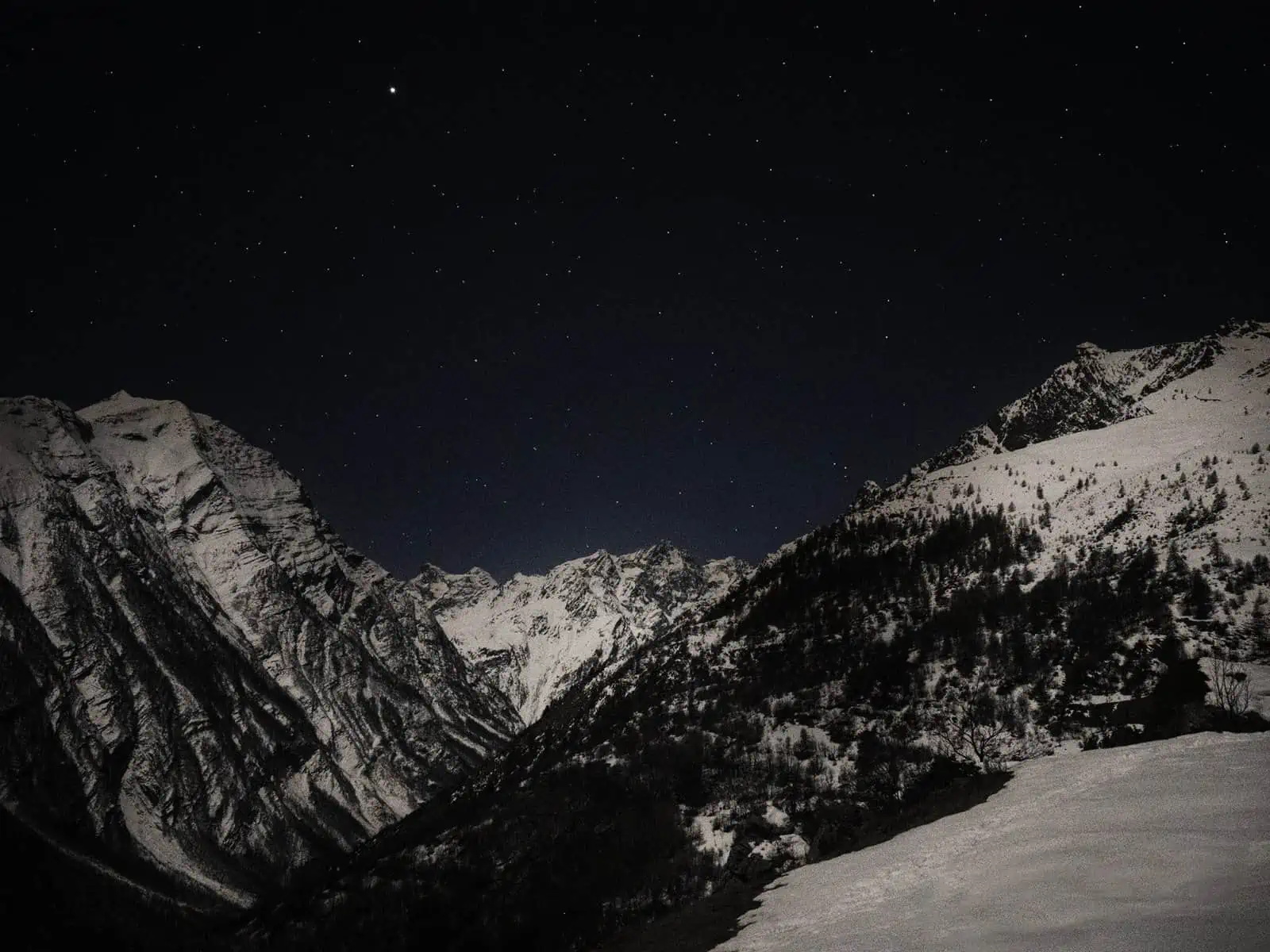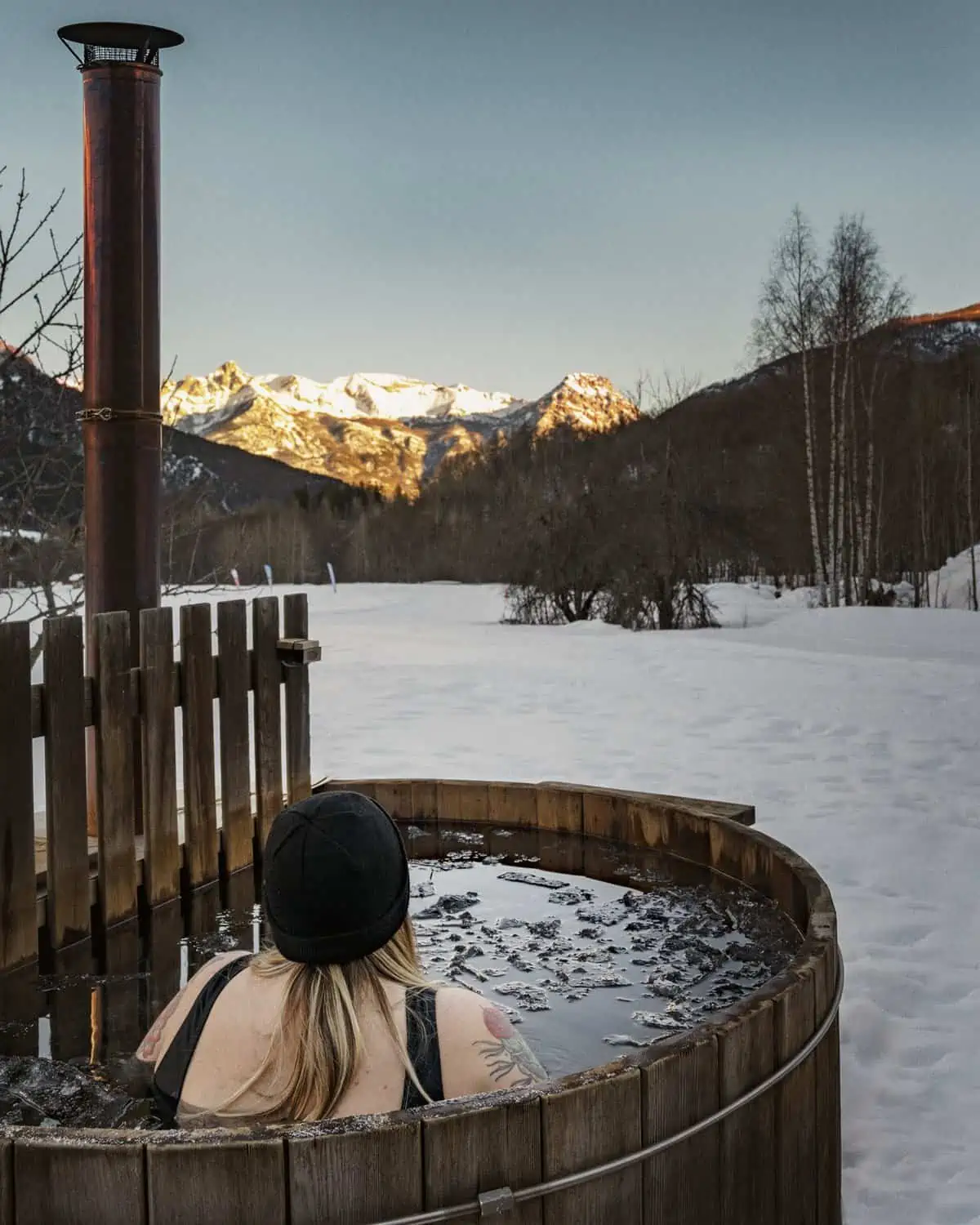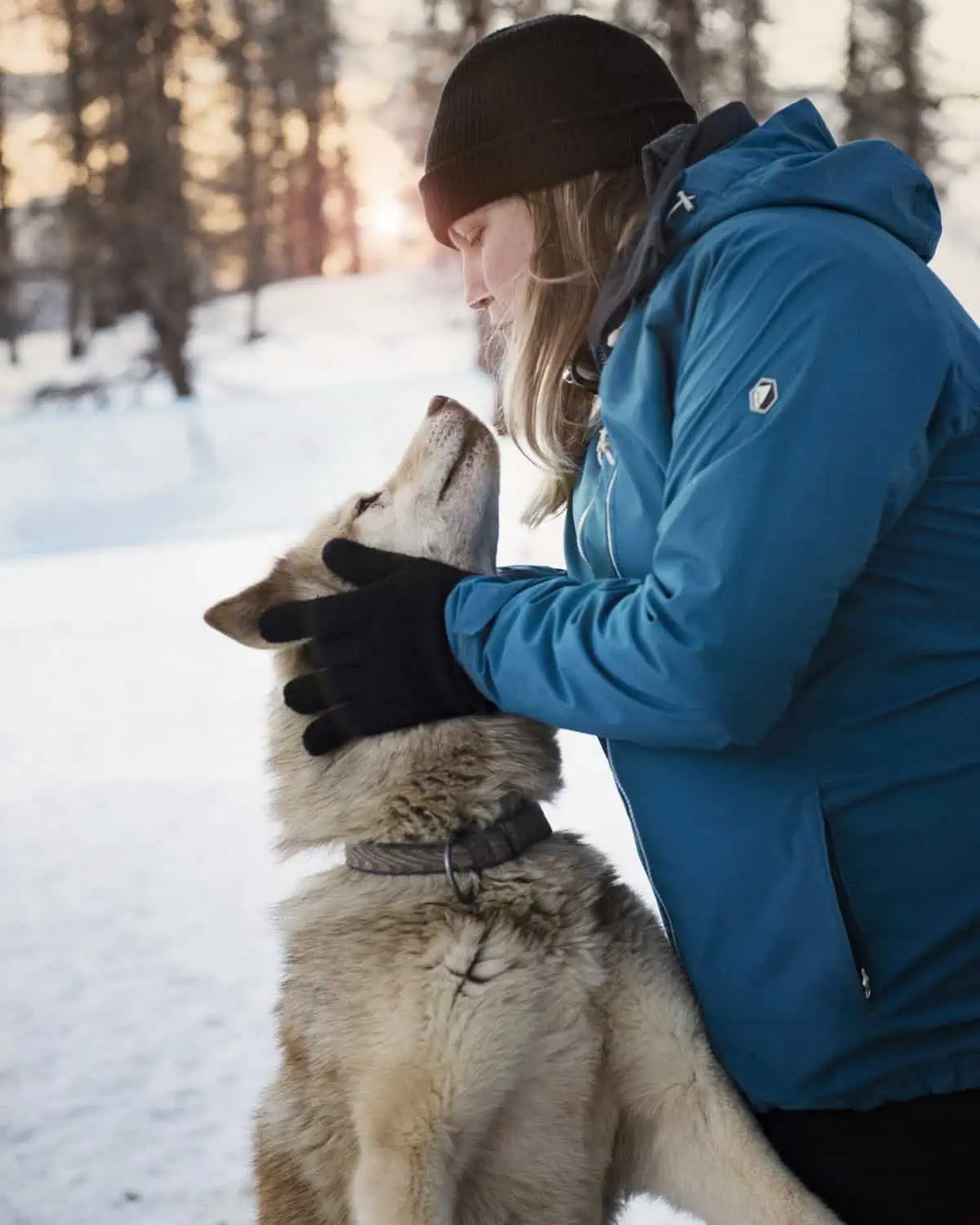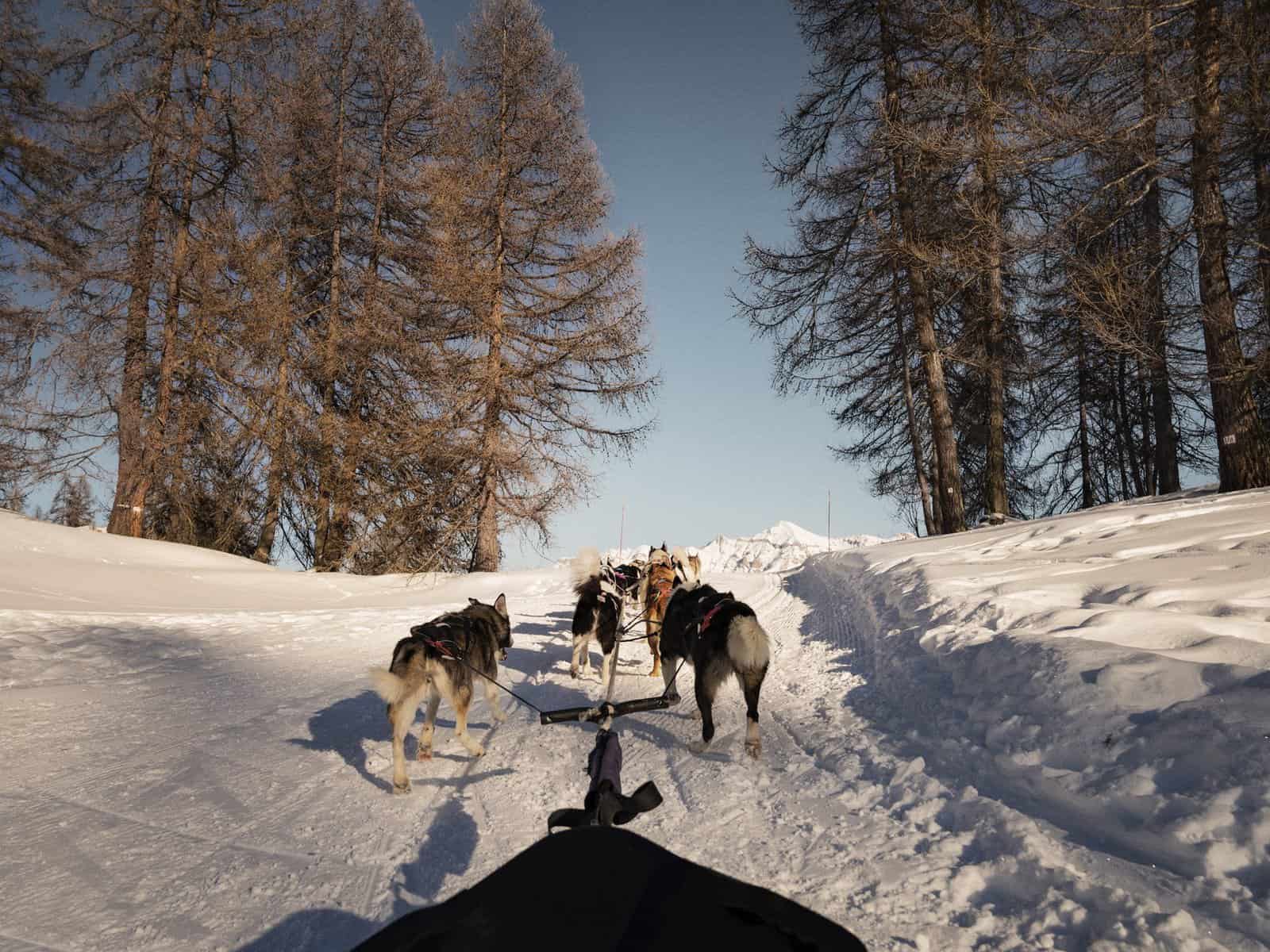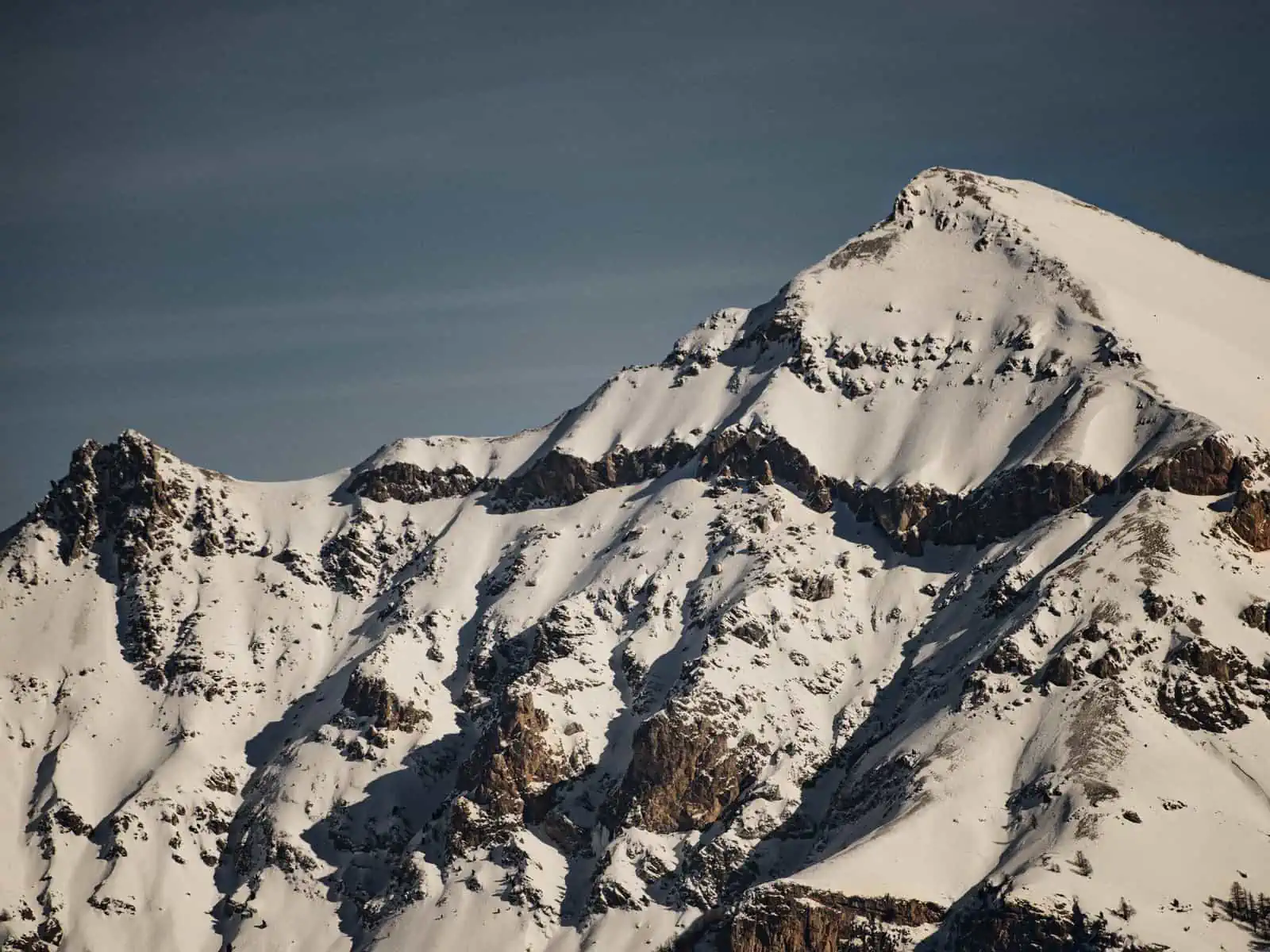This is a sponsored post in partnership with Pays des Écrins Tourist Board – all opinions are our own.
At the end of January 2023, we headed off to the French Alps as guests of the Pays des Écrins Tourist Board. If you’ve visited this site before, you’ll surely know that we love the Alps and especially so in Winter – there’s something undeniably magical about a mountain landscape blanketed in a thick layer of snow. This would be our first visit to the French Alps in Winter (Though we have visited the French Alps in Summer before). You might think you know what to expect from a place, but this trip still managed to give us a different take on the Alps to anything we had previously experienced.
When to Visit the French Alps in Winter
We visited the French Alps between late January and Early February 2023. The winter tourism season in the Alps is difficult to precisely define as it’s dictated by the amount of snow on the ground, but generally runs from December until March. If you want to build your winter holiday in Europe around skiing, then aiming to visit between December and March is probably optimal, but, if you want to focus on other activities, then you have a bit more leeway in terms of planning and can add a month either side to this window. Heading out in December can give a magical spin on the Festive Season. Whilst we visited during a quiet period, be aware that the area is a popular winter destination and does get busy during French public and school holidays.
Why visit the French Alps in Winter?
Many people will think that Winter holidays in the Alps mean one thing: skiing. There’s no denying that skiing is a big deal in the Alps and a massive industry has emerged to service the demand for this sport – indeed package Winter holidays are a great starting point if you want to build your visit around skiing. However, to say that skiing is the only thing to do is massively short-sighted. The Alps are also a perfect winter destination for a snow holiday for non skiers. The snow-covered landscape can, as we’ll see later, form a backdrop to a wide variety of activities, from snow-hiking to ice climbing. What’s more, visitors can take advantage of ski infrastructure including lifts, resort hotels, shuttle buses and restaurants to make the mountains uniquely accessible. Beyond a wealth of activates, there’s a certain hospitality that makes the Alps uniquely appealing and visitors will find cosy family run hotels, incredible restaurants and people who are passionate about their environment. Finally, if you need another reason to visit, then we need to come back to the landscape: if you’ve never seen high mountains covered in snow, then you are missing out on one of nature’s true spectacles!
What are the Hautes-Alpes and the Pays Des Écrins?
Let’s get a sense of the place that we visited: Our hosts were the Pays de Écrins Tourism Board. Pays de Écrins sits in the Hautes-Alpes – the ‘Upper Alps’ – near the border with Italy. The name ‘Upper Alps’ refers to the fact that there are some very tall mountains in the area including Pelvoux (3946m), which was long thought to be the tallest mountain in France… until it was summited in 1828 and the nearby Barres Des Écrins (4102m) was identified as a taller summit! In 1860 the Savoy region became part of France and with it, France gained a new tallest mountain: Mont Blanc (4809m).
The Hautes-Alpes are in the Provence-Alpes-Côte d’Azur region of Southern France. You might recognise the ‘Côte d’Azur’ part of the region name and associate it with the French Riviera – the Sun-drenched Mediterranean coast encompassing such iconic locations as Saint Tropez, Cannes and Monaco. The Hautes-Alpes are inland from the turquoise waters, white sand beaches and hot weather of the Mediterranean coast, but their relative proximity to the Côte d’Azur gives the area a unique climate, even during Winter months. During our visit, it was certainly cold – with temperatures dipping to around -5C most days (this is close to the average winter temperature, but it can get much colder than this and wind chill can make things seem much colder too) – but we also had completely clear blue skies and plenty of sunshine every day of our visit. Several people we met told us there’s a local saying that you can expect 300 days of sunshine each year in the area and our experience certainly tallies with this. Many of our previous Winter experiencesthe Alps have been characterised by low cloud, fog and mist, often with days going by without a break in the cloud, but this was completely different! You might not immediately think of the mountains when contemplating winter sun holidays, but there truly is an experience of year-round sunshine here, which can be very welcoming in the depths of winter, and a great way to beat the winter blues. We think this makes the Hautes-Alpes a very appealing holiday destination.
Our base for this visit was the historic Alpine town of Vallouise which sits in a valley surrounded by dizzying peaks on either side. The valley sides are home to two well-developed ski resorts: Pelvoux Vallouise and Puy Saint Vincent. Vallouise itself is quite small, but still boasts a number of fantastic restaurants (more on this later), a historic town market and some beautiful old architecture plus all the regular convenience stores and sports equipment rental shops you’d imagine in a mountain resort town. The summit of Pelvoux in the adjoining Écrins National Park towers over the valley. Vallouise was the perfect hub for our visit: right in the middle of things but still relatively quiet. If your visit to the area centres on alpine skiing, then you might want to consider staying in one of the hotels in the developed resorts for optimum proximity to the slopes, but for a snow holiday for non skiers – or indeed for skiers who want a more rounded experience of the area – Vallouise is perfect.
The Écrins National Park
The Parc National des Écrins –The Écrins National Park– dominates the area and will celebrate its fiftieth anniversary in 2023. The tall summits in the Hautes-Alpes all sit within the bounds of the Écrins National Park and it’s an important refuge for various animal species including wolves. The Écrins National Park is easily accessible – there are no entry fees, tickets or permits required – though it is still completely wild and undeveloped, with no roads at all crossing the park. It’s where you’ll find the more demanding outdoor activities in the area such as winter hiking and ski touring routes along with a range of climbing possibilities. We’d thoroughly recommend a visit to the Maison du Parc– the fantastic park visitor centre in Vallouise. As well as having plenty of information on the history of the Écrins National Park and the wildlife and geography you can find in the park, the Maison du Park also host regular exhibitions and is a great place to get up to date information on conditions in the park should you wish to venture in for winter hiking, cross country skiing and so on. For those interested in long-distance hiking or ski touring, there are a number of huts in the park which help make multi-day trips possible. In Winter there are no guardians – staff – present in the huts and accommodation is very basic: there’s one open room, so you’ll have shelter from the elements, but no running water or electricity. Reaching any of these huts in Winter is best left for groups with considerable experience in the mountains.
A Hidden Gem and a Perfect Place to Discover the French Alps in Winter
Many people we speak to in the UK know and indeed visit the French Alps, and they are a popular destination for Winter holidays in Europe. However, time and again, you hear the names of the same well-known resorts: Val-d’Isère, Tignes and Chamonix. The Pays des Écrins is certainly less well-known amongst people we speak to in the UK. This is a great shame, we think, as the area has a lot to offer: it still has all the infrastructure you’d expect from a developed ski resort area – equipment rental, lifts, hotels etc. – but it’s also on a much more human scale. This is certainly not a ‘super resort’ and, whilst skiing is certainly one of the main activities here, as we’ll see it’s also very far from the only thing to do. What’s more, the area does not come with the premium prices of some of the bigger resorts. There’s absolutely no denying it: there’s a preconception in the UK that Winter holidays in Europe – and especially anything that involves skiing – are only for the wealthy. For sure, there are plenty of places in the world where you can have a very luxurious (and expensive!) snow holiday, but in continental Europe these are simply not viewed as being as exclusive as we might think they are in the UK! We have spent plenty of time in Alps in Winter and we know well that these trips do not have to break the bank. However, we’ve always thought skiing was pricey and inaccessible. As we’ll see, this trip changed that perception!
How to Get to Pays Des Écrins
Airports Near Pays des Écrins
The Pays des Écrins is easily accessible from the UK by air. The main Airports for the French Alps are all appropriate including Marseilles and Turin (in Italy). These are all relatively nearby. There’s also an airport in Grenoble – a true French Alps Airport – but be aware that this only operates during Winter. Car hire is available at all these airports, and driving is, of course, a great way to explore the Alps – indeed this is what we usually do on trips like this. Flight times from the UK to the main airports for the French Alps is a few hours at most and most routes are serviced by budget airlines with direct flights from a number of key UK airports – so it’s easy to get there at reasonable cost and with frequent flights to the areas various airports, travellers have a degree of flexibility in terms of planning their arrival and departure times. Flight deals also often make the areas even more accessible.
Travel by Train From the UK to the Pays des Écrins
Whilst travelling by air might seem the obvious option to get to the Pays des Écrins, for this trip, we were keen to try something different and we decided to take advantage of France’s amazing high speed rail network to reach our destination. For the first leg of our journey, we travelled from our home in London to Paris via the Eurostar. This journey takes roughly 2:15hrs from London St. Pancras International to Paris Gare du Nord. From here, we transferred to Paris Gare de Lyon – there’s a number of different ways to do this using public transport, but the RER D Line is probably the quickest, taking just under ten minutes. A high speed TGV train travels from Gare de Lyon to Turin in Italy and we took this service, disembarking in Oulx Cesana Clav Sestriere in Italy – roughly a 4:45hrs journey – before completing the final leg in a taxi – roughly 1:15hrs.
At the time of writing there are as many as sixteen Eurostar services between London and Paris each day and three high speed trains between Paris and Oulx each day, so travellers have plenty of scope for flexibility in terms of timings – perhaps even more so than if flying. Our total journey time was over eight hours, which, on the surface of it, seems much longer than a flight, but once you factor in the time needed to travel to and from the airport, the extra time you need to allow at the airport and so on, the difference rapidly closes. We also ‘broke up’ our outward journey, spending two nights enjoying Paris before heading on to the mountains.
In terms of costs, both rail and air fares can vary enormously based on how far in advance you book, or conversely if you get a last-minute deal. It’s difficult, therefore, to do a meaningful cost comparison, however, our train travel costs seemed in line with the cost of affordable flights once a baggage allowance has been factored in. However, the train has one big advantage here: there are no strict weight limits on baggage! You’ll absolutely need cold weather gear and insulated boots on a trip like this and you can easily find your airline baggage allowance eaten up by this gear. There’s no such worry on the train! If you’re bringing bulky ski or mountaineering equipment, the train becomes an even more appealing proposition.
That final leg of our journey by taxi from Oulx to Vallouise could potentially cost over €100 each way and this is clearly not ideal. Our hosts at the tourist board told us that another cheaper option exists: disembarking from the train at Modane (one stop ahead of Oulx) and then catching ashuttle bus to Vallouise. This would add just over an hour onto the total journey time, but would be considerably less expensive.
Getting Around Pays des Écrins
Our short visit to Pays des Écrins was centred on activities that were all close by to where we stayed. None the less, most of our activities were still beyond comfortable walking distance. However, for those who want to visit the area without driving themselves, we were told that the guides for many activities would be more than willing to collect and drop off participants. If you choose to build your stay around guided activities – which is absolutely a great way to experience the area – then this means you could easily make a car hire-free visit to the area work.
Accommodation Options in Pays Des Écrins
There’s a range of accommodation options available in the Pays des Écrins, but we stayed in a traditional Gîte or boarding house –Chalet Au Fil de l’Onde– just outside of Vallouise. We had a private suite with access to a communal living room and a kitchen. The house can accommodate a maximum of twelve guests at a time so it’s a world away from the large hotels in the ski resorts. We were met with exceptional friendliness and hospitality at every point on our visit, but even with this high standard, our hosts at Au Fil de l’Onde deserve a special mention. Simply put, they looked after us so well! The place had a wonderful, relaxed atmosphere. We had a delicious fresh breakfast each morning, a flask of hot tea on days with cold activities and, on one night, a delicious home-cooked meal. Cross-country ski pistes (which can also be used for hiking and snow shoeing) cross the bottom of the Gîte’s grounds, so it’s possible to hit the trail right from the front door. We could not have wished for a better place to stay.
What Can You Do In Winter In Écrins?
We only had three full days in the Pays des Écrins – and we can say straight away that we wished had more time! The tourism board had created an action-packed schedule of outdoor activities for us to get a taster of what the area had to offer. This did not disappoint us! Any of these activities could easily be expanded to a full day and some could indeed become the focus of an entire holiday. As you’ll see, we dived straight into some activities that, on the surface, seemed quite intense. However, everything we did was absolutely suitable for beginners or those with little experience. One common thread with everything we did was the quality of the instruction and, as we would see time and again in the trip, the absolute passion of the people we met. It’s also worth mentioning again that Winter activities don’t just mean skiing and that this area offers an array of activities. It is a perfect place to base a snow holiday for non skiers as well as generally being an excellent place for a Winter holiday in Europe.
Ice Climbing
We started off with an activity that definitely put us both out of our comfort zones: Ice climbing. We had both done indoor rope climbing before, but not for a number of years and besides which, Ice Climbing just seemed to be on a whole other level.
Ice climbing is a big deal in the Hautes Alpes and there are plenty of well-regarded climbing sites around Pays des Écrins. Before our climb, we had a trip to an outdoor store to meet our guide, Louis from ice-fall.com, and to collect our equipment: Rigid boots (you can also climb in your own B3 rated boots, which we intended to do, but our guide recommended we swap these out for the narrower hire boots for a better experience), climbing crampons (these differ from regular crampons in that they have aggressive vertically oriented spikes at the front), climbing axes, harnesses, ropes, helmets and various other climbing tools. If you’ve done any kind of rope climbing before, much of the gear will be familiar.
Our guide instantly put us at ease – he pointed out that when most people think of ice climbing they think of elite athletes, but the sport is a surprisingly accessible mountain activity and can be sampled inexpensively in a few hours just as we had planned.
Our location was a stunning ice fall a few minutes outside of Vallouise. None the less, it was just a few minutes’ walk from the car park – so absolutely accessible. Our guide set up some top ropes and we got straight into a safety briefing before discussing the core techniques. After a few exercises to get used to the feel of the equipment and the basic techniques, it was time for our first proper climb. You might think of ice climbers using their massive strength to smash axes into the ice, but the reality is that it’s a much more subtle experience. It is physically demanding, but, at the level we climbed, not as much as we thought it would be with strategically planning out your line to the top and where to place the axes and crampon tips for optimum grip being far more important than brute strength.
We can’t say we were expert ice climbers by the end of our session – very far from it – but the session proved we could absolutely climb on ice and left us with a buzz we hadn’t felt for a long time! Ice-fall.com offer a range of different climbing experiences, ranging from short introductory session such as what we did, to multi-day experiences that build the beginner up to an advanced level or allow experienced climbers to develop their skills. You could easily build and entire visit to the area around these.
Nordic Walking
The second activity on our first day was Nordic Walking with our guide Elodie Larive from Randonne Écrins. If you hike with walking poles, then you might initially struggle to understand exactly what makes Nordic Walking different from what you already do. However, there are clear differences. Nordic Walking was originally conceived of as a way for those who practice Cross Country or ‘Nordic’ Skiing to maintain their fitness and technique when there’s no snow on the ground. It’s a method of walking that uses poles to engage the walker’s upper body much more so than regular walking does. Hikers use poles primarily to help with balance and to help lever them up ascents. In Nordic Walking the poles are used to help propel the walker forward.
You’ll often see Nordic Walkers moving at speed – taking long strides and looking almost as if they are about to start running – but the technique can easily be slowed down to fit the walker’s fitness level or intention: you can just as easily Nordic Walk at a more leisurely pace, taking in the views – and this is exactly what we did!
Our guide Elodie had met us from lunch and took us to the start of a cross-country piste in the Puy Saint Vincent ski resort. This piste is a ‘groomed’ trail – meaning a machine rakes the snow every day so it doesn’t get compacted to ice. It’s intended for use by winter hikers, those on snowshoes and cross-country skiers amongst others. Our piste started at 1800m up the mountains, so we had a spectacular view over the valley, and this would make for a wonderful backdrop to our experience.
We began with some stretching and mobility exercises to help loosen up the joints we would be using before we began to walk. The actual walking happened in stages – we began simply dragging our poles before gradually working up to something closer to full Nordic Walking. We can report that it does feel different! You are aware that your shoulders and torso are engaging in a way that doesn’t normally happen when you walk regularly.
It’s worth noting that Nordic Walking isn’t just about turning a walk into a full-body workout: it also helps you move more ‘positively’ and the technique will help you make shorter work of inclines.
On the one hand, Our Nordic Walk was a lovely, guided hike through a spectacular landscape, but on the other, it also introduced us to a new and enjoyable way of approaching movement.
Aside from Nordic Walking, Elodie also runs a full Nordic Experience combining Nordic Walking, sauna and cold-water swimming or snow bathing (essentially, swimming in deep snow). We think that would be a very enjoyable way to pass some time!
Night Hiking Beneath the Stars
Towards the end of our first day, as the cloudless sky darkened and filled with stars, we were met by David Casadémont from Astro-Rando who would guide our final activity for the day – one which he calls ‘Le Balcon des Étoiles’ – the ‘Balcony of Stars’.
David loves the mountains, and he also loves the stars – he works teaching children about astronomy. The day’s final experience was a hike up to a high vantage point where we could see the various villages in the Pays des Écrins illuminated below and the stars filling the sky above.
We took the twisting road in David’s van up to Puy Aillaud – pausing briefly to see Venus in the sky before it vanished behind the mountains. Puy Aillaud is an historic village filled with beautiful traditional Alpine houses and perched near a hill top above Vallouise – it’s a popular launch site for paragliders. From there, we stepped into snowshoes (brought by David) and, accompanied by his dog, set off for a brisk hike through the forest to the top of the hill and an incredible vantage point.
Snowshoes are a fantastic way to navigate in deep snow – they don’t just incorporate spikes to improve your grip on slippery surfaces, but the large area of the shoe also distributes your weight, helping to stop you sinking into deep snow. What’s more, there aren’t any special skills or learning involved – if you can walk, you can snowshoe.
It was dark at this point, but there was a full moon and, combined with the blanket of deep snow, there was a surprising amount of light and, even though we had torches with us, we didn’t need to use them at all for navigation. In fact, the torch was only used to help illuminate the controls on a camera back when we paused to take photos (and if you are planning on taking photos, be sure to bring a tripod! It might seem like there’s a lot of light, but your exposures will still likely be too long to hand-hold your camera). We’re used to hiking in the dark and have a guide on how it can be enjoyed safely too. It’s surprising just how long you can continue to see for a long way as the light fades.
We emerged from the trees on the hilltop and a blanket of pristine snow extended beyond us. ‘Enjoy the powder!’ shouted David as we waded through. From our viewpoint, David pointed out places illuminated below and the constellations and stars illuminating us from above.
Our experience was sadly, but necessarily, a short one, but we learned that David offers a range of guided night hikes (along with daytime guided hikes) through his site and this was truly a magical experience – a way to see nature that’s different from usual.
Skiing
This was a big one for Matt. He’s wanted to ski ever since being a child and this was finally the opportunity to give it a go. Skiing comes with certain connotations in the UK: It’s assumed that it’s difficult, dangerous and expensive. There is some truth to all of these assumptions: there is a whole new set of skills to learn, you can really hurt yourself and you can spend a lot of money on equipment and coaching. However, all of these assumptions are equally untrue: The basic skills needed to ski are not tough to master; You’re unlikely to hurt yourself if you ski within your limits and apply the basic skills you learn and the tuition, equipment rental and access to the slopes does not need to be expensive. There are many different types of skiing which employ different techniques and types of equipment. Our lesson would be in Alpine Skiing – which is exactly what most non-skiers would immediately think of when skiing is mentioned – basically taking a lift to the top of a groomed slope and then skiing to the bottom.
We were fortunate to have our lesson guided by Eric, the head of the Puy Saint Vincent, Pelvoux and Vallouise ESF. The ESF is the École du Ski Français– the French Ski School – an internationally regarded network of French ski schools and instructors that has trained some of the world’s best skiers. In short, learning to ski from an ESF instructor is about as good as it gets!
We collected our equipment from a local hire store – rigid ski boots, skis and helmets. The technician ensured everything was fitted and adjusted correctly and we headed off to the slope.
Our lesson was just a taster, and it proceeded with speed: We learned how to put the skis on and the basics of walking around in them. After that, we learned how to slow ourselves down, how to turn and how to use two types of lift. We quickly proceeded from a practice area onto a longer training slope and had time for a few runs.
We wanted to address the issue of costs and Eric outlined a number of options for learning to ski. Group lessons are by far the cheapest approach, costing €130 per person for a course of six lessons over six days (and two hours per lesson) aimed to take the participant from absolute beginner to a point where they can ski on the less demanding runs. There are also courses specifically tailored for young children and teens. Equipment hire and lift passes are on top of this, but reasonably priced packages are available here. So, learning to ski is not without cost, but the costs were also much lower than we thought they would be. Taster sessions are also available for those who just want to ‘test the water’ too.
What an experience it was! In a very short time, we realised that we still had a long way to got to be accomplished skiers, but also saw the possibilities it could offer. Perhaps the best way we can sum this experience up is by saying that we already want to be back on the slopes.
Igloo Pelvoo
After a day and a half of action-packed and physically demanding activities, it was time for something completely different. Igloo Pelvoo is, as the name suggests, an Igloo that’s rebuilt every year at the foot of the ski runs in Vallouise. Each year it takes a different theme – this year it’s polar exploration. The igloo – a massive structure – is essentially an art gallery. It contains winding corridors and chambers filled with ice and snow sculptures.
We were lucky to meet with Dan, a British-born sculptor now living in the area who is the principal artist behind the works in this years’ Igloo. He demonstrated both snow and ice sculpting to us and also spoke about the shifting nature of the medium: the snow is not static but rather shifts under its weight, so the igloo can be seen as a dynamic space: Rooms and sculptures need to re-adjusted and reworked as the season progress to compensate for the shifting snow.
Attached to the igloo is a secondary display of models, children’s artworks and also a games area and a small ice rink. The Igloo also serves as a location for film screenings with videos projected onto some of the outside sculptures.
It’s clear that much of the igloo is aimed at younger visitors, and we’d say it’s a must-visit on a family holiday, but even if you are travelling without children, it’s well worth taking the time to visit. The displays are genuinely creative and the sculptures truly are works of art.
Ice Bathing
This was not on our itinerary, but it was something we decided to make time for! If you visit this site regularly, you’ll know that Fay is a big fan of cold water swimming. We’d spotted an outdoor hot tub at our accommodation covered with a thick layer of ice and this was too good an opportunity to miss! A hiking pole was called in to break the ice and form an outdoor pool after which Fay had a few minutes’ dip. We had no way of measuring the temperature, but would imagine it was around 1C (the ice acts as an insulating layer, preventing all of the water from freezing).
After a day of strenuous physical activity, the cold water was just the ticket to ease aching muscles.
A word of warning: if you’re not familiar with cold water swimming, then approach activities like this with caution – in fact if you don’t cold water swim, we would not recommend a dip in ice water as your first experience. Be sure you have a dry towel waiting and a way to get your body back to temperature and above all else, know your limits in terms of when to get out.
Dog Mushing
Our final activity in Pays des Écrins was a definite highlight: Dog Mushing. We began our journey on the same piste where we did our Nordic Walking, following the trail some distance further away from the developed ski resort. With time we arrived at the compound of Mushing Addict and met expert musher Thibaud Forget.
Thibaud had his first experience with dog sledding when his parents took him to Finland for his 18th Birthday. This led to several seasons working with dogs there before he returned to France and joined Mushing Addict founder Rémi. Thibaud and his colleague were in charge of twenty-three dogs in their compound and run a variety of different activities with them.
Having been introduced to the dogs and briefed on how to greet them, we were taken out for an exhilarating run on a sled drawn by a team of ten dogs. It was clear from the outset that Thibaud cares immensely for the dogs and their welfare always came first. He told us he would rather cancel a session than make an unwell dog work. Younger dogs are introduced by pulling smaller children’s sledges whilst older dogs are retired from mushing but still take participants on dog-guided walks so they can still act on their instincts to pull and guide.
Aside from the shorter sled run that we experienced, Mushing Addict run a range of different experiences including longer journeys into the wilderness, and full day immersive sessions where participants get to spend more time with the animals – helping with feeding them and bedding them down for the night.
This was a truly unique experience and unlike anything else we have ever done. We enjoyed this immensely and would thoroughly recommend it.
Discover and Book Experiences Directly Through the Pays des Écrins Website
The Pays des Écrins Tourism Board have a very comprehensive website – we’ve linked to various pages on it multiple times in this article. Their site is a great resource, packed full of factual information for visitors. It also has a portal where you can directly book experiences in the area and this is absolutely a valuable starting point if you’re planning to visit the area. Some of the experiences we enjoyed (such as David’s ‘Le Balcon Des Étoiles’ night hike) are listed on here, but there’s also a wealth of other experiences available including photo treks, guided mountaineering and scientific treks. There’s also a separate list of free activities in the area that’s well worth checking out too.
Food & Restaurant Recommendations
We both eat a plant-based diet and we know well that it can be tricky to find suitable food in restaurants in Europe away from major cities. Previous trips to the Alps in Winter have been fuelled by cheese-free pizzas and pasta in plain tomato sauce. We were therefore excited when our hosts at the Pays des Écrins tourism board said they had arranged for a number of local restaurants to cater for us. And we were very well looked after indeed! It would take too long to mention every dish we ate, but some highlights include mushroom ravioli at Auberge Saint Antoine, a deconstructed tagine at Le Glacier Blanc, a delicious platter of spelt and roasted vegetables at our Gîte and a technicolor salad at La Table de Nany. We were fortunate to speak to some of the chefs and restauranteurs and as was a common theme on this trip, we found ourselves speaking with people who were passionate about the food they created and the ingredients they used to do so. None of these restaurants had fully plant-based options on their regular menus, but all of them were prepared to accommodate us – and they did so very well indeed. If you eat a plant-based or any kind of specialised diet, we would encourage you to reach out to and book the places you plan to eat in advance. With some forewarning, they can certainly cater.
Conclusion – Scratching the Surface
All told, we had three full days in the Pays des Écrins. It was certainly one of the best holidays in Winter we have had for a long time! In that time we had an action-packed schedule of activities arranged for us by the tourism board and this really opened our eyes to the possibilities in the Hautes-Alpes. This is a perfect destination for a snow holiday for non skiers and, if you want to hit the slopes, well that’s more than catered for too. We enjoyed what we did immensely, but the time we had there simply wasn’t enough! All of the activities we undertook could easily have been extended to a full day or more and the level of hospitality we were met with was simply amazing. We love the Winter in the Alps and we know we only scratched the surface of what this incredible area has to offer and we are already looking forward to when we can return.

